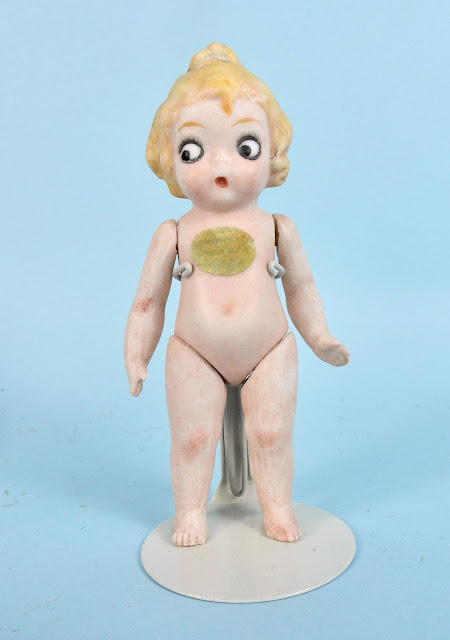As a collector, there is always that one piece you feel you really must have to fill a gap in your collection. Those who have followed this blog know that I have long lamented my lack of an elusive Galluba and Hofmann male bathing beauty (beach beau?). But there was one other bisque bathing beauty I longed to acquire, the rare all-bisque doll version of Grace Drayton's plump parody of Paul Chabas' famous (or in some histories, infamous) painting entitled "September Morn." While I still need a man, this little Miss Morn has joined her sisters in my display cases. Of good quality bisque, this 4-inch tall wide-eyed cutie is probably the smallest version of this scarce doll. The doll came in various sizes, the tallest I have seen being 7.5 inches.
She has her original, albeit faded, chest label reading "September Morning Germany."
A round label on the back declares that the design has been patented. There are no marks on the doll herself. On December 30, 1913, Drayton was granted a patent for a statuette; although the name "September Morn" does not appear, the patent drawing is clearly Drayton's comedic cartoon of Chabas' bare bather. The doll no doubt dates from this same period.




No comments:
Post a Comment